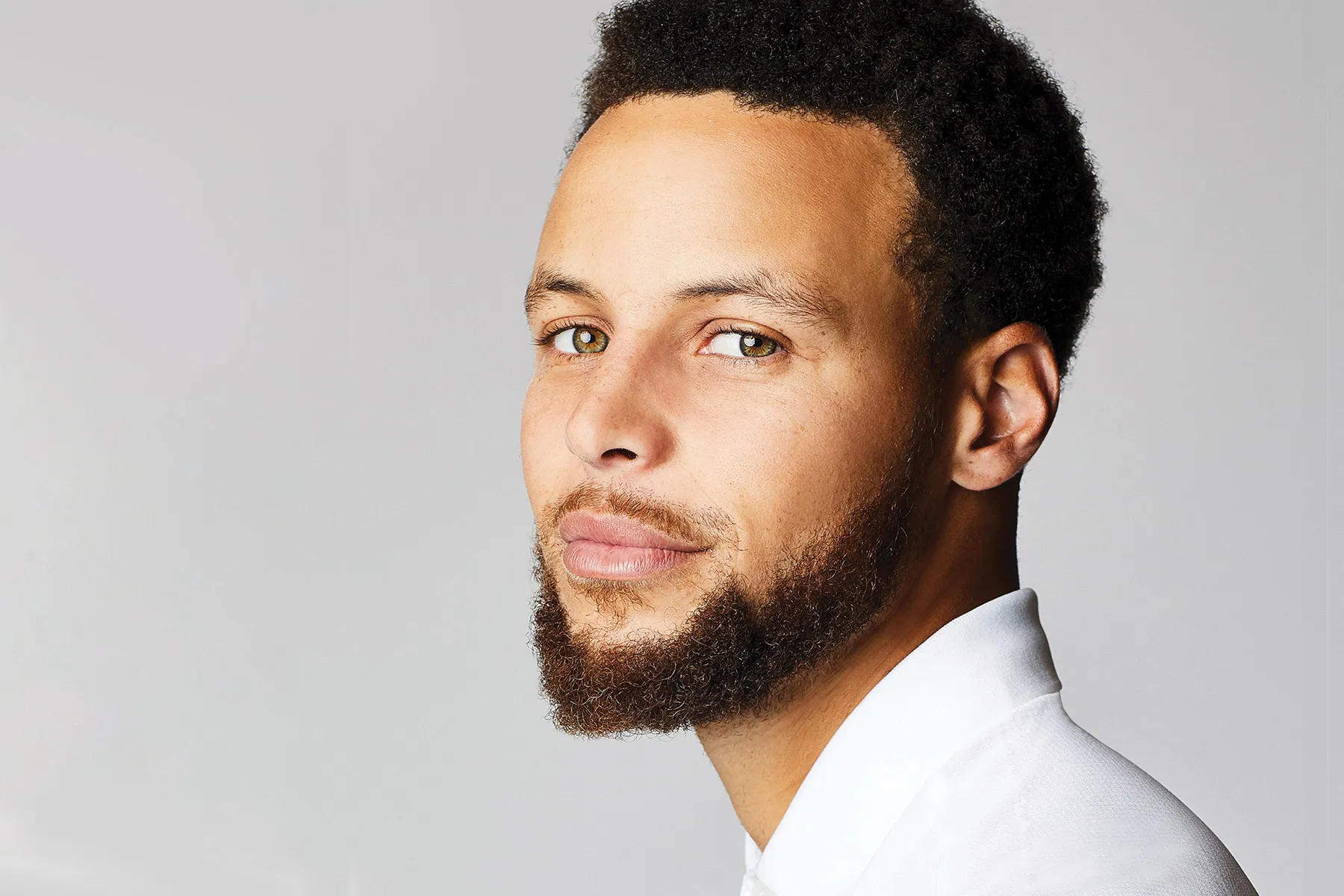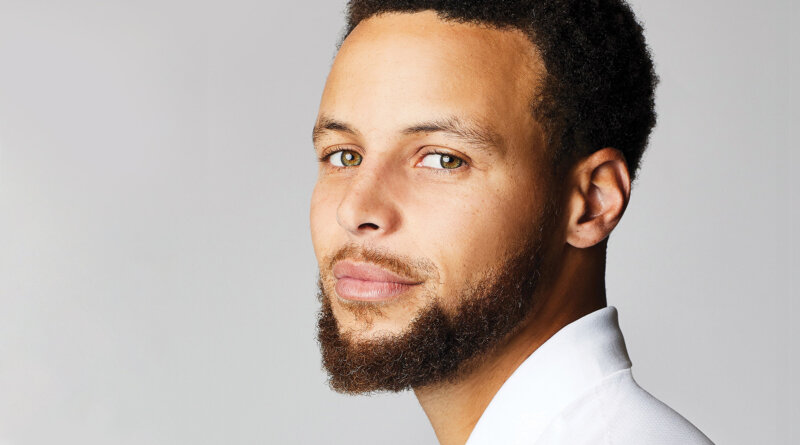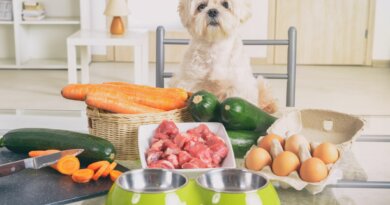Steph Curry Turns Focus to Kids During the Coronavirus Pandemic

In the midst of the coronavirus crisis, basketball superstar Steph Curry has a message he wants everyone to hear.
“It’s important to be in the know, have the right information, and act accordingly.”
On March 26, he brought those words to his more than 30 million Instagram followers, with help from a new acquaintance: Anthony Fauci, MD, the director of the National Institute of Allergy and Infectious Diseases (NIAID) and the medical face of the federal government’s response to the coronavirus.
The two talked for 30 minutes via video chat. First, they joked about the toy basketball hoop that Fauci, 79, a former high school basketball team captain, had in his office. Then, the conversation turned serious.
“I wanted to speak to the younger demographic, the one that looks to social media to get their news, hopefully from reliable sources,” Curry explained the following week, “so they understand the urgency and the responsibility that we all need to take individually to protect ourselves, our families, and the people around us.”
Curry has played for the Golden State Warriors since 2009, the entirety of his professional career. He’s been an NBA All-Star six times. Twice he’s been voted NBA Most Valuable Player. And with his help, the Warriors have won three NBA championships. Now, though, the coronavirus has led him to carve a new role for himself off the court as he lives in lockdown with his family in Atherton, CA, an upscale suburb in the Bay Area. He’s still getting used to it, and he assumes his fans are as well.
“I’m sure it was a shock to see me interviewing the head of the NIAID,” he says, with a laugh that indicates he remains a bit shocked himself. “But I hope some people perked up and said this is real, even if it might not yet be affecting them and their inner circle.”
Before it exploded across the country and stay-at-home suddenly became the new normal, the impact of the virus was felt mostly on the West Coast, particularly in the Seattle area. By early March, though more states had begun to announce their first cases. Governors soon started to declare states of emergency. Then, the virus came for the NBA.
Continued
On March 11, it was announced that Utah Jazz center Rudy Gobert had tested positive for the novel coronavirus, the first player in the league to receive a diagnosis. Shortly after that, NBA Commissioner Adam Silver made a dramatic call: The remainder of the basketball season would be postponed. COVID-19, the illness caused by the coronavirus, had shut down a major American institution.
This shocked everyone, including the players, who had just been told they would play games in empty stadiums.
“We were trying to get our heads around how the game would actually happen and what it would look like and feel like and all that,” recalls Curry, 32. “Then, 12 hours later, Adam Silver stepped up and made his announcement.”
At the time, Curry had other concerns on his mind. Two or three days before the shutdown, he had started to feel sick. That made him nervous.
“I don’t usually get sick all that often from the flu, the seasonal flu, so getting sick worried me for sure,” he says.
He tested positive for influenza A, but to be certain that was all he had, he received a coronavirus test. It took 4 days to get the results.
“I was kind of in limbo,” he says. “And I was absolutely worried, especially for my family, my three young kids here in the house. At that point there wasn’t a lot of understanding on how the virus worked and how it spread and what the actual symptoms were.”
Meals for Schoolkids
Shortly after he got the all clear, the Bay Area went into lockdown mode, issuing a multicounty order for residents to remain indoors. Curry and his wife, Food Network host and cookbook author Ayesha Curry, immediately stepped up to help.
Last summer, the couple launched Eat. Learn. Play., a nonprofit foundation that focuses on nutrition, education, and physical activity for children in Oakland, the Bay Area, and beyond.
More recently, in response to the coronavirus, their foundation donated a million meals to ensure that kids get the food they need despite school closings throughout the area. They partnered with the Alameda County Community Food Bank, the Oakland Unified School District, the World Central Kitchen, and the anti-hunger organization Feeding America.
Continued
“These kids rely on their schools for two meals a day, sometimes three meals day,” Curry says. “When that’s taken away, that only heightens the need.”
Pediatrician Dominique Williams, MD, MPH, agrees. “All of those kids could be struggling in the short term,” says Williams, based at the Center for Healthy Weight and Nutrition at Nationwide Children’s Hospital in Columbus, OH.
“For the period of the pandemic, it’s likely that, unless they get the meals they need, our kids are going to have behavioral issues, fatigue, and the aches and pains of not having enough food or the right balance of nutrients.”
Insufficient food also makes it more difficult for kids to focus on their home-schooling lessons during the pandemic, Williams says, and it likely will cause them to act out, contributing to the stress of their parents or caregivers.
“It can be a challenge for the best of us.”
Curry and his wife worried that, among all the fallout resulting from the virus, children’s meals would get overlooked. Not on their watch, he insists.
“This is important work, and we’ll continue it as long as the shutdown continues.”
Time for Family
When Curry isn’t talking to health experts or working to keep local kids fed, he can be found around the house, doing what needs doing, trying to keep busy, just like his neighbors and much of the rest of the country. [At press time, many states and cities were under stay-at-home advisories.]
“First of all,” he says, “I have an understanding and appreciation of the fact that me and my family have the ability to just be at home. Most families don’t have the option to just camp up at home for however long this is.”
His 7-year-old daughter, Riley, spends part of each day doing distance learning that her school has arranged, while his younger daughter, Ryan, 4, does her own thing around the house. But what about 1-year-old son Canon?
“He’s the happiest guy in the world!” Curry says. “Both parents are home all day, so he’s loving the attention.”
Continued
Curry and his wife travel a lot for work, and while Curry misses the game intensely, he and Ayesha are getting something that’s all too rare for them: nonstop family time.
“This is the most time that we’ve been together as a unit at home, you know, in a very, very long time,” Curry says. “Mostly because we have our three kids looking to us, there’s no excuse to not enjoy this moment. We’ll probably never ever again in our lifetimes get this kind of personal time with the kids.”
Curry spends part of each day in his home gym, where he can FaceTime with the Warriors athletic staff or do a workout via Zoom. Every morning, he and his teammates, along with folks on the Warriors staff, can get on their Peloton bikes and compete in virtual races. But the uncertainty of when he’ll return to the court weighs on him.
“I’ve always had concrete end dates or target dates for when I need to be ready to play, but right now there’s so much that’s unknown,” Curry says. “That makes it tougher to try to stay in shape and challenge myself on the daily to work out and try to find ways to get shots up. I say that with the full understanding that our issues are easier to solve than what most people are going through.”
One project he assigned himself: setting up a basketball hoop: “It’s crazy I didn’t have one in my house until 3 days ago.”
Favorite family activities include Nintendo Wii’s Just Dance, bike rides around the neighborhood, and doing housework while grooving to DJ D-Nice’s “Club Quarantine” dance parties on Instagram Live. At night, he and Ayesha catch up virtually with family in Dallas and North Carolina. The girls love cooking with Ayesha, and Curry loves what she cooks. Left to his own devices at the grocery store, he’d fill his cart with popcorn and other junk food. “My wife just side-eyes me the whole time,” he says, laughing again. “I have to grow up a bit in that department.”
Continued
But the pandemic’s always in the background, and Curry finds that it takes its toll.
“I’ve had a couple days where you just get frozen, very unproductive, not really knowing what to do and feeling overwhelmed with the lack of control that you have,” he explains. “That has kind of crept up on me occasionally.”
What does he do? He follows his sister’s advice: “She’s always said, it’s OK to be overwhelmed sometimes. Be OK with it, but be aware of it. If you need to, lay on the couch for a couple of hours, clear your head, and have a moment for yourself. That’s all right.”
To keep it together, he keeps himself busy, makes sure he’s there for his kids, to answer their questions, to reassure them, to be OK, if not for himself then for them.
“If we’re kind of down in the dumps and don’t have any energy and kind of let the situation overwhelm us, that’s going to trickle down,” Curry says.
It’s a heady blend of emotions, laced with fear, realistically facing what the future might bring, and yet, as much as possible, he stays positive.
“We’re right in the thick of it right now. It’s hard, it’s really hard to see the light at the end of the tunnel,” he says. “It’s going to be all right. We’re going to get through it. But it’s going to be tough. We know that.”
Taking on Food Insecurity in America
Steph and Ayesha Curry created a foundation called Eat. Learn. Play. to address, among other issues, a shortage of food all too familiar to many families, even more so during the coronavirus pandemic.
Food insecure: The term describes households that don’t have enough food to meet each member’s nutritional needs. It’s a sizeable problem in the United States.
- 1 in 7. The number of food insecure households with children, according to the U.S. Department of Agriculture.
- 43.4%. Percentage of the federal government’s Supplemental Nutrition Assistance Program (SNAP) participants who are children.
- 30 million. The number of meals provided by the federal government’s National School Lunch Program every day.
Continued
“Food insecurity disproportionately affects people of color and people who live in poverty,” says Dominique Williams, MD, MPH, a pediatrician in Columbus, OH. “But it still touches people in the middle class, it still touches people who have a two-parent or two-caregiver household, it still touches people who don’t qualify for government programs.”
In that key way, it’s not unlike the coronavirus: “Hunger does not discriminate, food insecurity does not discriminate.”
Find more articles, browse back issues, and read the current issue of
WebMD Magazine
.




